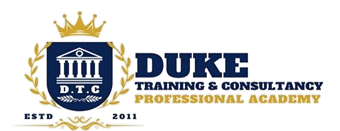Course
OEE-Overall Equipment Effectiveness: The Basis for Equipment and Process Efficiency
This course focuses on the concept of Overall Equipment Effectiveness (OEE) as a fundamental metric for evaluating the efficiency of equipment and processes in manufacturing environments. Participants will gain a comprehensive understanding of how OEE is calculated, its significance in driving operational excellence, and strategies for improving equipment and process efficiency. Through interactive sessions, case studies, and practical examples, participants will learn how to leverage OEE data to identify opportunities for optimization and drive continuous improvement initiatives.
- Understand the concept and significance of Overall Equipment Effectiveness (OEE) as a performance metric in manufacturing.
- Learn how to calculate OEE and its components: Availability, Performance, and Quality.
- Explore the factors that contribute to downtime, speed loss, and quality defects in equipment and processes.
- Discover strategies for improving each component of OEE to maximize equipment utilization and process efficiency.
- Gain knowledge of best practices for collecting OEE data, analyzing performance trends, and interpreting results.
- Develop skills in identifying root causes of inefficiencies and prioritizing improvement opportunities based on OEE analysis.
- Learn how to establish performance benchmarks and set targets for OEE improvement initiatives.
- Explore case studies and real-world examples to illustrate the application of OEE concepts in different manufacturing settings.
- Develop action plans for implementing OEE improvement projects and driving sustainable performance improvements across the organization.
- In-depth understanding of Overall Equipment Effectiveness (OEE) principles, calculation methods, and components.
- Proficiency in analyzing OEE data to identify equipment and process inefficiencies and prioritize improvement efforts.
- Knowledge of best practices for improving Availability, Performance, and Quality to maximize OEE.
- Ability to establish performance benchmarks and set targets for OEE improvement initiatives.
- Practical experience through case studies, examples, and hands-on exercises to apply OEE concepts in real-world scenarios.
- Preparation for driving OEE improvement projects and leading continuous improvement efforts in manufacturing environments.
Manufacturing professionals, operations managers, production supervisors, maintenance technicians, quality assurance personnel, and anyone involved in equipment performance monitoring and improvement activities.
Relevant to a wide range of manufacturing sectors, including automotive, aerospace, electronics, pharmaceuticals, food and beverage, and other industries where equipment efficiency is critical for operational success.
- Introduction to Overall Equipment Effectiveness (OEE): Definition, significance, and benefits.
- OEE Calculation: Understanding Availability, Performance, and Quality metrics.
- Factors Affecting OEE: Downtime, speed loss, quality defects, and their impact on equipment and process efficiency.
- Strategies for Improving OEE: Addressing root causes, implementing corrective actions, and driving continuous improvement.
- OEE Data Collection and Analysis: Techniques, tools, and best practices.
- Establishing Performance Benchmarks: Setting targets for OEE improvement initiatives.
- Case Studies and Real-world Examples: Illustrating the application of OEE concepts in manufacturing settings.
- Developing OEE Improvement Action Plans: Defining goals, identifying improvement opportunities, and prioritizing initiatives.
- Hands-on Exercises and Group Discussions: Applying OEE analysis techniques to identify improvement opportunities and develop action plans.

